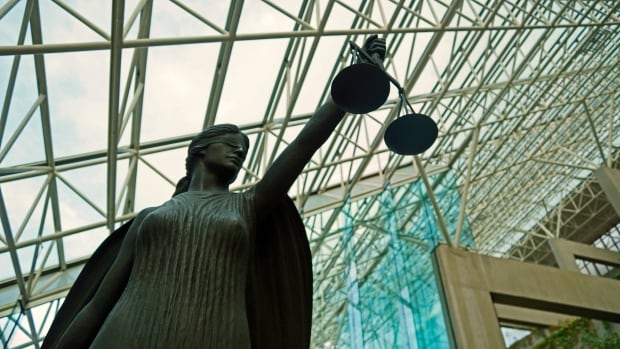A physician says patient overcrowding at Winnipeg’s Grace Hospital’s emergency department is a “catastrophe.”
Dr. Doug Eyolfson says Grace’s ER was built to handle 30 active patients, but that number surged to 52 on Sunday — with another 40 people in the waiting room. He said some people waiting for a bed were left on stretchers in the hallways.
Eyolfson calls that kind of situation dangerous, but says it happens occasionally without warning.
“There’s no way you can safely care for that many active patients,” said Eyolfson, who is an ER doctor and also a Liberal candidate running for a Winnipeg seat in the upcoming federal election.
“We don’t have nearly enough staff, so everyone is basically running thin. There are staff members that are on the verge of tears trying to manage what’s going on.”
Darlene Jackson, president of the Manitoba Nurses’ Union, says the situation is “not unusual” or specific to the Grace.
“Unfortunately, this is becoming an almost normal, everyday situation in all of our ERs in the city,” she said.
Although the province patted itself on the back in September for moving closer toward its goal of hiring 1,000 health-care workers, which includes the hiring of 300 nurses, Jackson says the results of that progress is yet to be seen on the ground.
“We really haven’t seen a difference in wait times, the amount of overtime, or private for-profit agency nurse use, so we haven’t really seen anything tangible.”
The recruitment and retention of nurses in Manitoba’s health-care system is critical, she said, as opening more beds is pointless without anyone to staff them.
“The more nurses we lose out of the system, the less likely we are to solve these issues right now.”
Grace ER fared worst in September median waits
One in 10 people waited nearly nine hours for care at Winnipeg’s urgent care and emergency departments last September, data from the regional health authority says. That’s down almost half an hour compared to last August, and an hour less than the previous September.
Grace Hospital’s emergency department had the second-longest wait of nearly 11 hours for one in 10 people that month, according to the data. That’s down minimally from last August, and almost half an hour more than the previous September.
The Grace’s ER also fared the worst in the city when it comes to median wait times last September, at nearly five-and-a-half hours, compared to an average of just under three-and-a-half hours across all of Winnipeg’s ERs and urgent care departments, the data shows.

People who go to the emergency department for minor issues contribute minimally to the problem, he said, as they can be seen and treated quite quickly.
The situation at the hospital can be credited in part to the conversion of three Winnipeg ERs into urgent care centres under the previous Progressive Conservative government in 2017, straining Manitoba’s health-care system, Eyolfson said.
“Then COVID happened, and the system just fell apart [and] still hasn’t really recovered.”
The overcrowding at Grace’s ER also stems largely from an aging population and a scourge of social issues such as homelessness, untreated mental illness and substance abuse disorders, said Eyolfson.
“It’s not just holes in the health-care system. There are so many holes in our whole social support safety network,” he said.
“There are no other places for them to go, and the emergency department is really the only place that can never say no.”
A lack of long-term care facilities in Manitoba means some seniors have spent a week waiting on a stretcher in a hallway for a bed to become available, he said.
“You have people who just are too frail to live at home, but we don’t have the infrastructure either to help them age in place [and] we don’t have nearly enough home care. We also don’t have enough long-term care beds.”
‘Very overwhelmed system’
Although he doesn’t see eye to eye with the NDP politically, Eyolfson says Manitoba’s current NDP government has taken steps to repair the health-care system after just over a year in office.
“There’s movement, there’s improvement, there’s hope — but it’s going to take a long time,” he said.
“I did not expect that this was going to be fixed in one year, I don’t think this is going to be fixed in one term. The damage done by the consolidation may take a decade to fix.”
He said “tremendous investment” is needed from the province to speed up progress, including increased funding for in-patient beds and long-term care capacity, as well as social services so that people aren’t getting sick in the first place.
“They need to be doing more, and they need to be doing it faster.”
“Even independent of COVID, we have a very, very overwhelmed system, and we’re out of options.”
Manitoba Health Minister Uzoma Asagwara understands there are challenges but they said the province is headed in the right direction.
“Manitoba is still facing challenges in health care and wait times in emergency rooms, including the Grace Hospital, are a big part of that. The previous government made things worse with cuts, but we’re making progress with investments in staffing and it’s starting to make an impact in our waiting room,” Asagwara said in a statement emailed to CBC.
They added that the Grace Hospital is on track to have all beds that have been funded by the province open by January.
Dr. Doug Eyolfson says the emergency room at Grace Hospital was built to handle 30 active patients, but that number surged to 52 on Sunday — with another 40 people in the waiting room.





